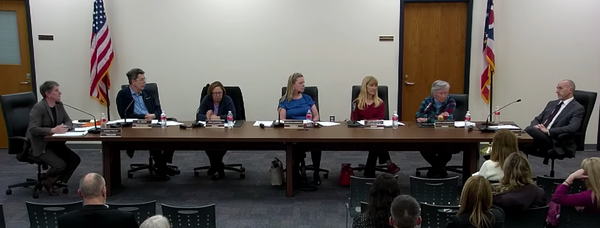Op-ed 5G and the FCC: Conflicts of Interest Abound
By Nick Rogers
Chardon, OH – If you think the “regulatory” agency known as the Federal Communications Commission (FCC) wouldn’t allow a harmful product to go to market, just take a look at some of their conflicts of interest. Former FCC chairman Tom Wheeler was CEO of the Cellular Telecommunications and Internet Association (CTIA) for twelve years. Another former CEO of theirs, Ajit Varadaraj Pai, worked as an in-house lawyer for Verizon.
The FCC – widely known as “the most captured agency in D.C.” – is basically owned and operated by the very mega-industry it claims to regulate (not unlike the relationships between the Environmental Protections Agency [EPA] and Monsanto-Bayer, the Food and Drug Administration [FDA] and Pfizer, etc.).
Wireless industry profits reached $300 billion by 2021 so, along with Big Pharma and the “defense” industry (all three of which are inextricably tied as we have clearly seen with the emergence of the track-and-trace-bio-security state), telecommunications companies have plenty of money left over to ensure that the revolving door between Big Telecom and government continues swinging. This, of course, prevents any officially sanctioned, legitimate investigations into their abysmally lackluster electromagnetic frequency (EMF) “safety standards“.
It is encouraging to know that Citizens all over this country (and the world) are waking up to the existential threat of prolonged EMF exposure (especially that of 5G), but Big Telecom has long-since prepared for this pushback. Their most powerful weapon comes in the form of the oft-cited Telecommunications Act of 1996 (TCA); specifically section § 704 (B)(iv).
The section states, “No State or local government or instrumentality thereof may regulate the placement, construction, and modification of personal wireless service facilities on the basis of the environmental effects of radio frequency emissions to the extent that such facilities comply with the Commission’s regulations concerning such emissions.”
The term “environmental effects” has clearly been put in place as an ambiguous one; one that may or may not apply to human health. However, in 1999, a court ruled in favor of the Town of Oyster Bay, NY, stating that “environmental effects” did, indeed, include human health effects. So, the precedent has been set, but this has not stopped the Big Telecom/FCC behemoth train from chugging on while profits continue to swell in conjunction with a dramatic rise in cancer rates for people under 50.
Despite an ever-growing body of evidence proving the biologically destructive properties of prolonged EMF exposure, it’s hardly surprising that an industry worth hundreds of billions of dollars would do everything possible to keep this information from the public.
The website Scientists for Wired Technology says, “The FCC RF microwave radiation exposure guidelines consider neither the time of exposure nor the total electromagnetic power delivered over time, which is utter nonsense and scientifically unsound.” In fact, the entire mainstream scientific consensus regarding radio frequency / electromagnetic / microwave radiation is that it’s safe simply because it doesn’t heat the skin.
A “historic win” against the FCC and its Big Telecom partners in crime came in the U.S. Court of Appeals in 2021, remanding the FCC’s decision not to revise its outdated – and utterly flawed – safety guidelines. As attorney Dafna Tachover said, “Finally the truth is out. I am hopeful that following this decision, the FCC will finally act with the public interest in mind, warn the public to reduce exposure and halt any further deployment of wireless and 5G.”
Sadly, and predictably, it has not done so. Hoping the FCC will do the right thing on its own is, well, hopeless. If the public as a whole continues gobbling up this technology or, at the very least, remains apathetic to its rollout and its harm, we can hope for little more than business as usual as far as wireless infrastructure deployment and wireless industry profits are concerned.
To get to the bottom of most corruption, the old adage “follow the money” usually applies. That money tends to lead to the revolving door between government and multi-national corporations. There may be no better example of this than the wireless telecommunications industry and the FCC.




